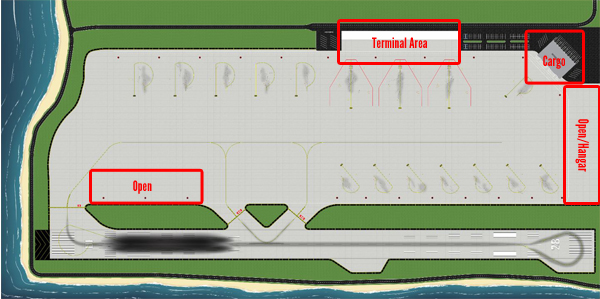

Ethiopian Airlines utilise Hong Kong as a stopover point for their flights. It is a focus city for China Airlines and China Eastern Airlines. The airport is one of the hubs of Oneworld, and is also one of the Asia-Pacific cargo hubs for UPS Airlines. It runs 24 hours a day and is the primary hub for Cathay Pacific, Greater Bay Airlines, Hong Kong Airlines, HK Express and Air Hong Kong (cargo carrier). The airport is operated by the Airport Authority Hong Kong (AAHH), a statutory body of the local government and was established on 1 December 1995. It is also home to one of the world's largest passenger terminal buildings, and was the largest when it had first opened in 1998. The airport is the world's busiest cargo gateway and one of the world's busiest passenger airports. Having been in commercial operation since 1998, Hong Kong International Airport is one of the largest trans-shipment centres, passenger hubs and gateways for destinations in to and from Greater China, Asia and the world. The airport is also referred to as Chek Lap Kok International Airport or Chek Lap Kok Airport, to distinguish it from its predecessor, the former Kai Tak Airport. The airport is built entirely on reclaimed land on the island of Chek Lap Kok at the west of the city. Hong Kong International Airport ( IATA: HKG, ICAO: VHHH) is a major international airport and the primary airport that serves Hong Kong, a special administrative region (SAR) of China. Hiong 1gong 3 Get 5( or gok 5)zi 4 Gi 1cong 2 So the next time you travel by air plane and the pilot announces that you’ll be taking off on runway 27, you'll know that you’re traveling due west.Source: Hong Kong International Airport This level of enunciation ensures clear communication and enhances safety. For example, Runway 4L-22R would be pronounced by air traffic control as “Flight 123, you are cleared to land on Runway Four Left” or alternatively “…Two Two Right,” if cleared to land the opposite direction.

A small number of airports have three parallel runways-the runway in the middle gets a “C” for center.ĭuring airport operations, runway number designations are pronounced individually. The ”L” and ”R” designate the relative position (left or right) of each runway respectively when approaching/facing its direction. One is Runway 4L-22R and the other 4R-22L. For example, Boston, Massachusetts’ Logan International Airport (pictured) has two pairs of parallel runways. Many large airports have parallel runways, which requires further designation of each runway. Therefore, an aircraft taking off easterly on Runway 9-27 would be considered to be utilizing Runway 9 for departure. Furthermore, each runway end is identified separately. Most runways can typically be used in either direction, depending on prevailing winds. Runway 36 means you’re moving north, and so on. So if you’re on runway 9, then you’re heading east (90 degrees on a compass). But the “W” is numbered 9 because the runway number is connected to the direction the plane is traveling. On a handheld compass, south is 180 degrees (so 18 in runway terms) and west is 270 (27).

You might be thinking that the numbers on this diagram are backwards. For example, Runway 9-27 is oriented east-west. The opposite end of the runway always differs by 180 degrees, so it’s numbered 18 higher or lower. The orientation of taking off and landing is specific to wind direction, which is constantly changing on the open seas, so the ship is turned into the wind. Naval aircraft carriers do not have runway designations painted on the flight deck. Runway markings, including the runway designations, are always white in color. Therefore, many large airports have a wide range of runway configurations to accommodate changes in seasonal wind directions. Runways are aligned predominantly to take advantage of prevailing winds. First, a few factoids before I explain:Įvery public use and military airfield on the face of the earth has (or should have) runway designations permanently painted at each runway end.Įnglish is the universal language of aviation, and runway designations are displayed via the same numeric system (Arabic) as used in the United States and Canada. What do they mean? It's an interesting question, and one that's obviously important for pilots. I’ve been asked many times the meaning of the big painted numbers at the end of each airport runway.


 0 kommentar(er)
0 kommentar(er)
